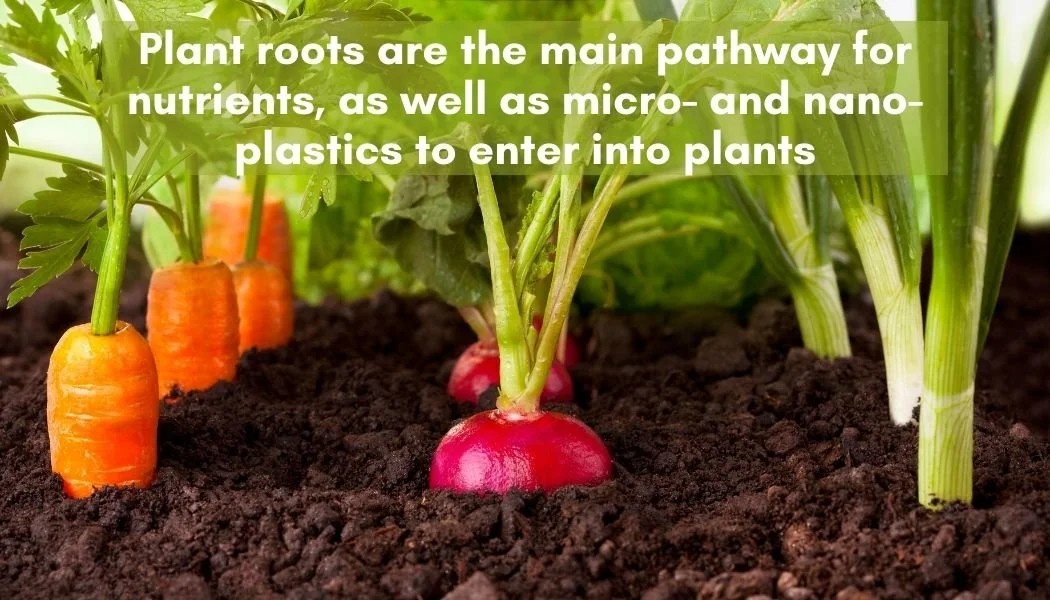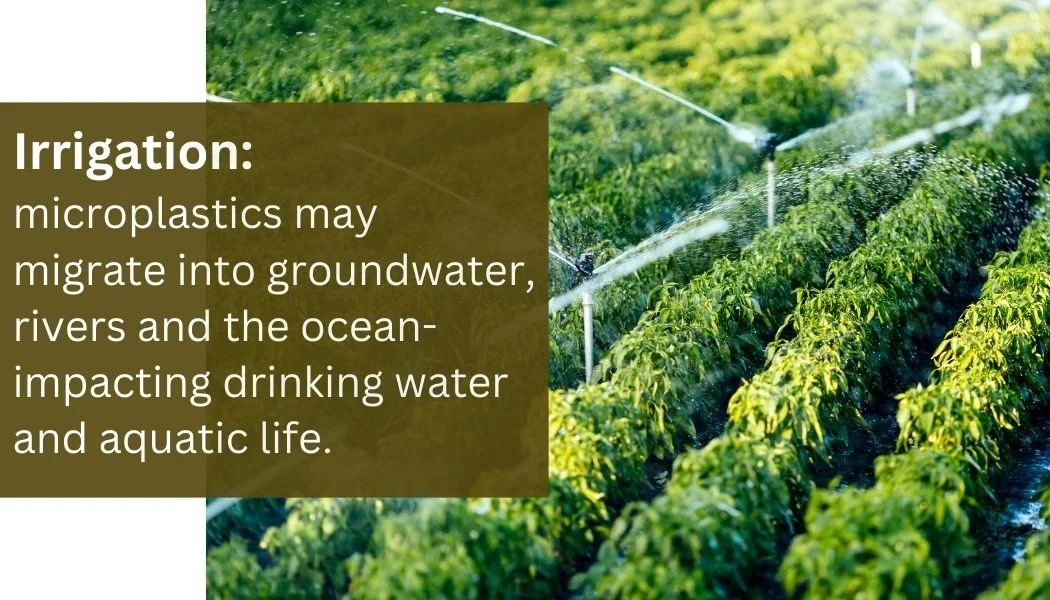Microplastics in Your Carrots?
What You Need to Know & What we can Do About It.
Our food system is evolving rapidly, and with it comes new discoveries—some exciting, some concerning. One recent finding is that microplastics, tiny plastic particles, have been detected in root vegetables like carrots and beets.
While this may sound unsettling, it’s not a reason to stop eating these nutrient-packed foods. Instead, it’s an opportunity to rethink our relationship with plastic and make changes that benefit both our health and the planet.
Read on to understand the benefits of eating root vegetables, why biosolids, or sewage sludge, are used to fertilize soil, and how we can prevent microplastics from infiltrating our lives.
Celebrating the Benefits of Root Vegetables
Root vegetables like carrots, beets, potatoes, turnips, and radishes are nutritional powerhouses, rich in fiber, vitamins, and minerals. They support immune function, digestive health, and overall wellness.
What makes them so beneficial? Their high content of bioactive compounds—including polyphenols, phenols, flavonoids, and vitamin C—provides strong antioxidant properties. These nutrients help regulate metabolic functions (such as glucose levels, lipid profiles, and blood pressure), act as prebiotics, and may even offer anti-cancer benefits. (1)
Understanding the Source
One major source of microplastics in our root crops is the use of sewage sludge as nutrient-rich fertilizer. This practice is part of an effort to create a circular economy—where waste is repurposed rather than discarded.
However, because sewage sludge contains microplastics from everyday waste, these particles can make their way into the soil and eventually into our vegetables. While research is ongoing, some studies suggest that microplastics could contribute to oxidative stress, immune disorders, and even an increased risk of cancer.(2)
Why are we reusing sewage sludge?!
In a bid to create a circular economy— the idea that products and materials can be kept in use through reusing, recycling, and other processes, instead of discarded— biosolids, or sewage sludge, are used in fields, parks, golf courses and farms to provide nutrients to soil.
Why root vegetables vs other vegetables like lettuce or tomatoes?
Plant roots are the main pathway for nutrients as well as micro and nano particles of plastics to enter into plants. One study in Europe found microplastics on a field nearly three feet deep from sewage sludge that had been applied 34 years prior. (3) And, as these fields are irrigated, microplastics also migrate into groundwater, rivers and the ocean- impacting drinking water and aquatic life.
Ecosystems and our food systems are complex and intertwined. The presence of microplastics in root vegetables is a reminder that our environment is interconnected, and challenges in one area can ripple into another.
While eating any produce grown with fertilizer from biosolids, or sewage sludge, may seem concerning, it’s important to keep the focus on progress and prevention so we don’t throw away nutrient-dense foods.
By being aware, we empower ourselves to support innovations in waste management and sustainable agriculture that aim to reduce the microplastic load in fertilizers. Rather than feeling fearful about the presence of microplastics in carrots, we can direct our energy toward meaningful actions in our daily lives.
Meaningful Actions
We don’t need to shy away from the vegetables we love and sustain us (there’s an issue with nearly everything!). On the contrary, a plant-forward diet remains one of the best choices for both our health and the planet. Here are some steps you can take:
Advocate for Better Waste Management: Support policies and companies that invest in improved waste treatment and recycling systems. This helps reduce the amount of plastic entering our sewage and, eventually, our agricultural fields.
Support Sustainable Agriculture: Seek out produce grown with innovative, cleaner methods of fertilization. Farmers are increasingly aware of these challenges and are working hard to find sustainable alternatives. Shop at local farmers' makers and get to know them- ask about pesticides, fertilizers and whether sewage sludge has been used on their fields.
Reduce Plastic Use: Every plastic item we avoid makes a difference. Opt for reusable bags, glass or stainless steel water bottles, and plastic-free food storage options. These small daily habits collectively reduce plastic waste and pollution.
Every water bottle counts.
Don’t Rely on Recycling. According to a recent Harvard study: “It will be challenging to correct the deeply entrenched idea that consumer diligence in recycling plastics can or could ever solve the plastic waste and pollution crisis. The reality is that only about 9% of the world’s plastic is recycled—it’s often not economically or technically possible to recycle the rest and the vast majority of plastics end up in landfills or get incinerated or dumped into the environment.” (4)
Stay Informed: As research evolves, staying updated on the latest findings helps you make better decisions about your diet and lifestyle. An informed community can drive positive change in both public policy and industry practices. You can periodically search for microplastics in food and read up on the latest research (ensure it’s a reputable source- my sources are listed below
Embracing a Healthy, Plant-Forward Future
By continuing to enjoy a variety of nutrient-dense root vegetables, you’re nourishing your body and supporting a more sustainable food system. The key isn’t to avoid vegetables but to focus on solutions—reducing our plastic footprint, advocating for better waste management, and making informed choices. Together, we can take meaningful steps toward a healthier future for ourselves and the planet.
Every small step—choosing reusable alternatives, supporting farmers using sustainable practices, and pushing for better policies—adds up. When we rethink our plastic use and demand better solutions, we contribute to a cleaner, healthier world.
Together, we can empower ourselves and our communities to foster a healthier environment.
Sources:
1 Knez, Eliza. Root Vegetables—Composition, Health Effects, and Contaminants. International journal of environmental research and public health. November 23, 2022.
2 Lazăr, Nina-Nicoleta. Micro and nano plastics in fruits and vegetables: A review. National Library of Medicine. National Center for Biotechnology Information. March 18, 2024.
3 Gerretsen, Isabelle. BBC: How microplastics are infiltrating the food you eat. BBC. January 3, 2023.
4 Murphy, Meg. Microplastics a growing challenge to health and the environment.Harvard T.H. Chan School of Public Health. January 2, 2025.





